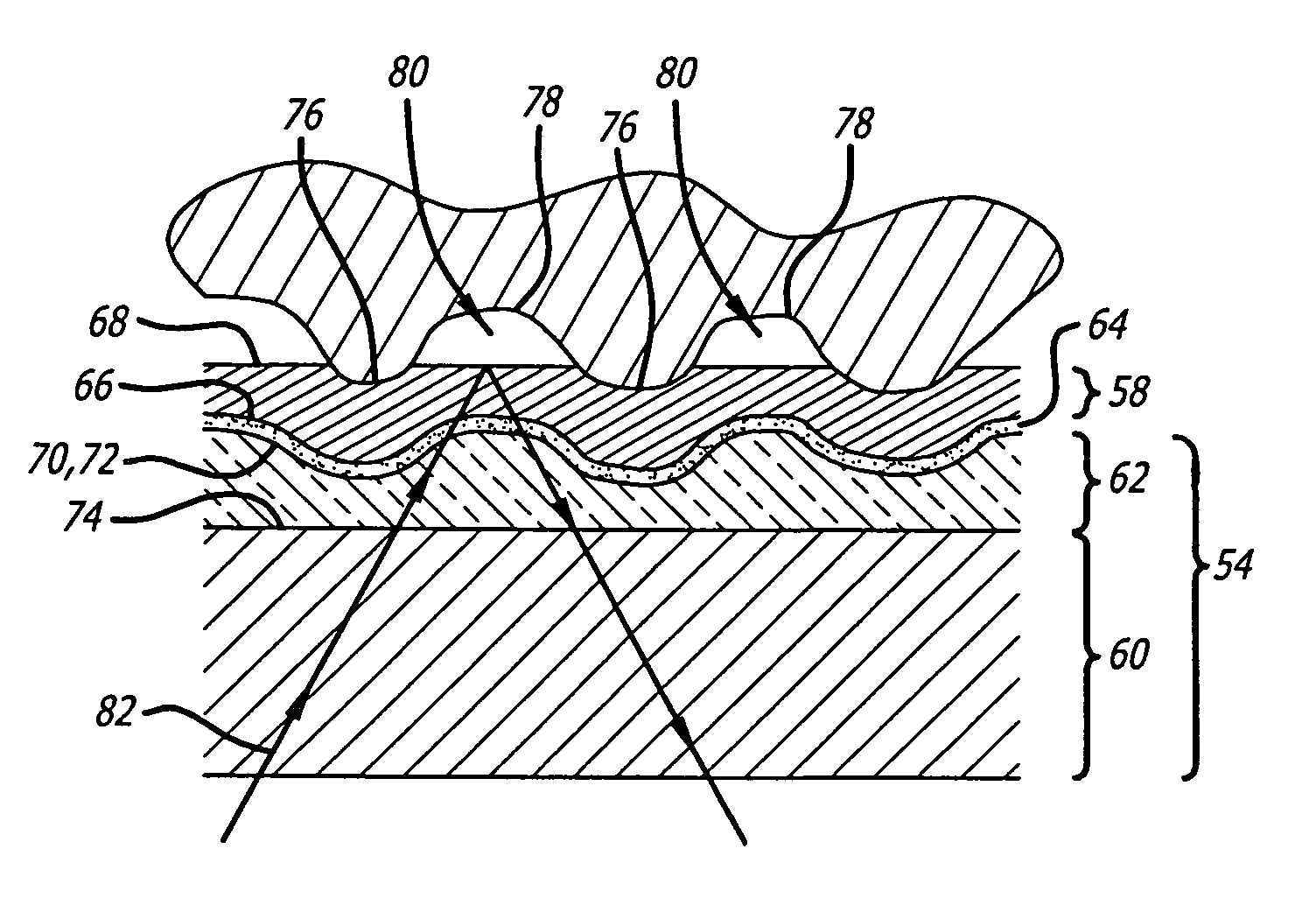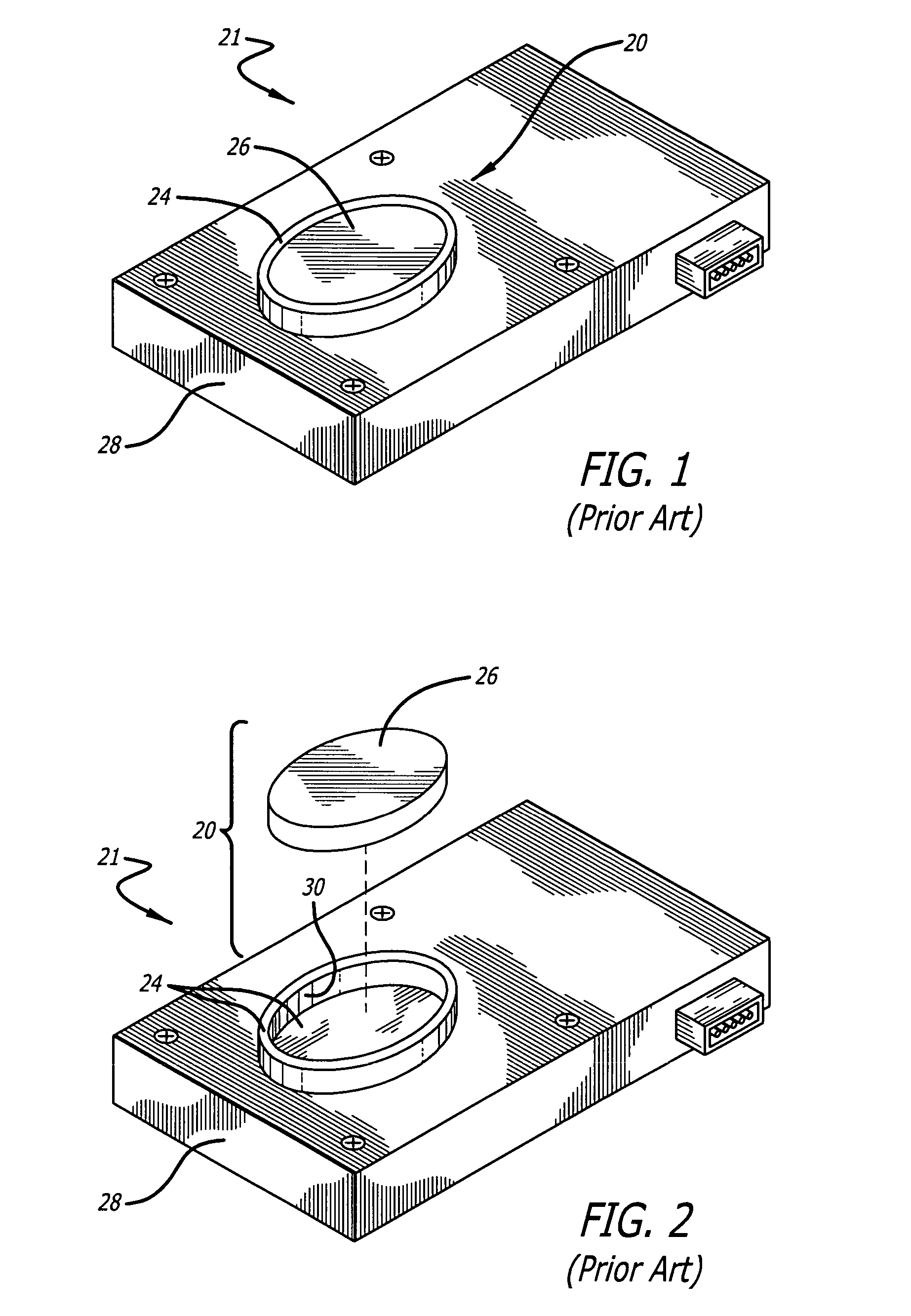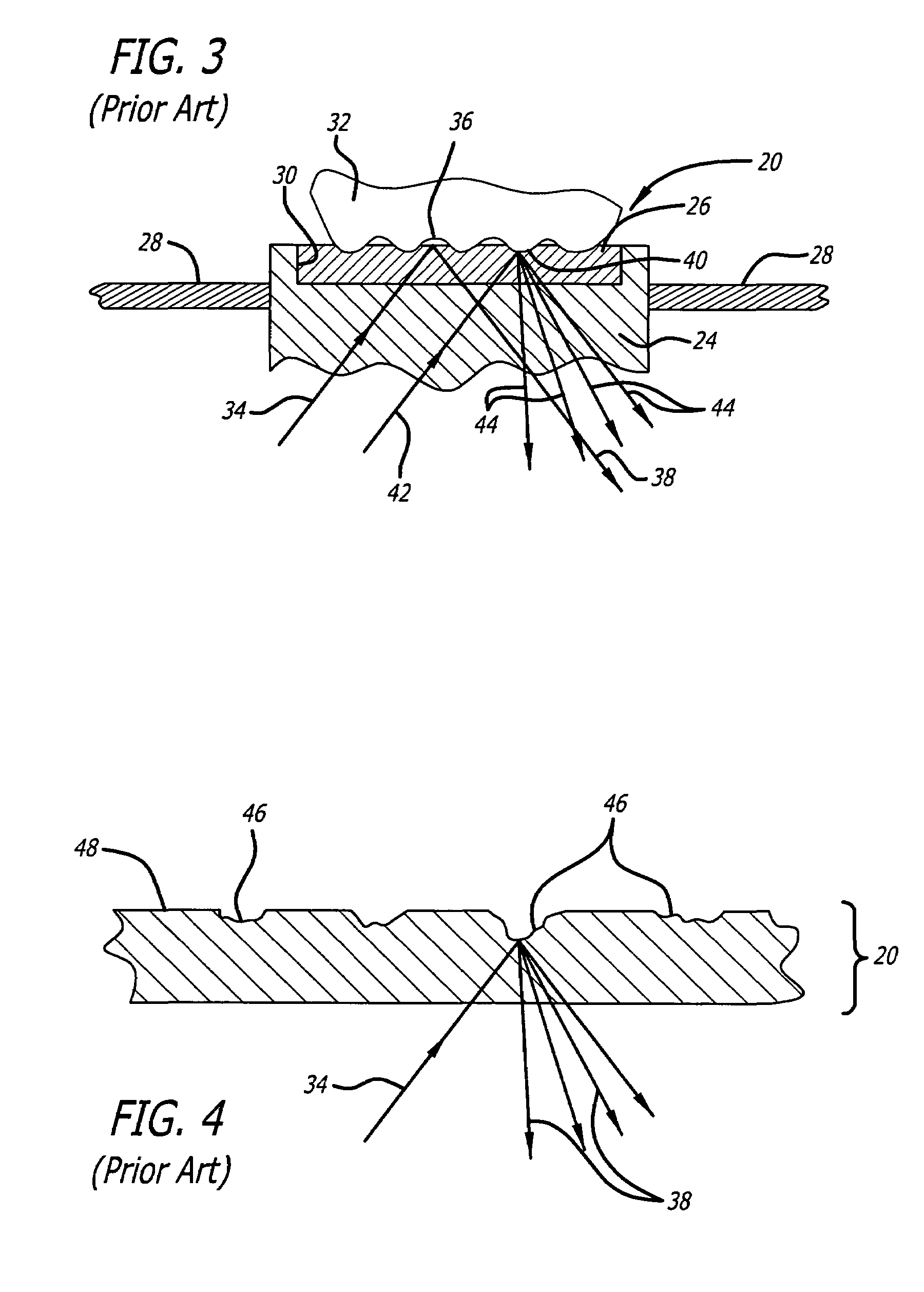Optical fingerprint imaging system and method with protective film
a fingerprint imaging and optical technology, applied in the field of electronic acquisition of fingerprints, can solve the problems of insufficient detail, inability to make a clear match, and inability to identify this unknown fingerprint,
- Summary
- Abstract
- Description
- Claims
- Application Information
AI Technical Summary
Benefits of technology
Problems solved by technology
Method used
Image
Examples
Embodiment Construction
[0034]Referring now in more detail to the exemplary drawings, wherein like reference numerals designate corresponding or like elements among the several views, there is shown in FIG. 5 a perspective view of an optical fingerprint imaging device 50 and in FIG. 6 an exploded view of the imaging device. The device includes a housing 52 and a platen 54 disposed thereon. The platen is covered by a removable protective film 58. In this embodiment, the platen includes a first layer 60 and a second layer 62. The protective film 58 is removably attached to the second layer and to the housing. The platen is optically transparent in that it allows light from within the imaging device to readily travel through the platen to accurately produce a fingerprint image of a finger pressed onto the platen for verification or identification purposes.
[0035]With particular reference to FIG. 6, the first layer 60 of this embodiment is rigid and preferably, though not necessarily, planar. The first layer ca...
PUM
 Login to View More
Login to View More Abstract
Description
Claims
Application Information
 Login to View More
Login to View More - R&D
- Intellectual Property
- Life Sciences
- Materials
- Tech Scout
- Unparalleled Data Quality
- Higher Quality Content
- 60% Fewer Hallucinations
Browse by: Latest US Patents, China's latest patents, Technical Efficacy Thesaurus, Application Domain, Technology Topic, Popular Technical Reports.
© 2025 PatSnap. All rights reserved.Legal|Privacy policy|Modern Slavery Act Transparency Statement|Sitemap|About US| Contact US: help@patsnap.com



